Posted February 2, 2024 by Tiffany Lee
In case you missed these stories highlighting research and creative activity at the University of Nebraska-Lincoln, the Office of Research and Economic Development’s communications team has compiled a roundup of some recent top stories from research.unl.edu and other sources.
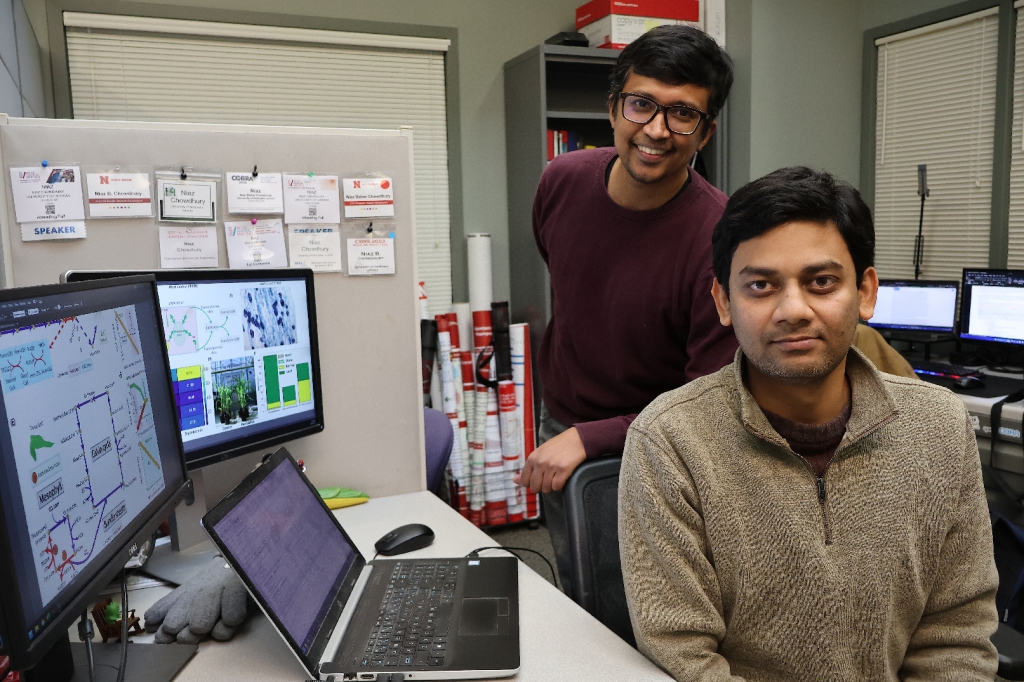
Husker researchers using metabolic model to study temperature stress on corn
Who: Rajib Saha, Richard L. and Carol S. McNeel associate professor of chemical and biomolecular engineering; Niaz Bahar Chowdhury, doctoral student in chemical and biomolecular engineering
What: With support from the National Science Foundation and the Department of Energy, Saha’s team built the largest-ever metabolic model of corn to study how temperature stress affects the plant and how the fungus Rhizophagus irregularis can alleviate the problem. The model will advance research into metabolic interactions, their associated underpinnings and other stressors affecting plant productivity. The researchers are exploring adjustment of plant metabolism to counteract temperature stress, either by reengineering the plant or by inoculating the corn root with R. irregularis, which reduces metabolic bottlenecks that impede plant growth. The model, which is of corn hybrid B73, will be available to researchers who want to study other stresses on corn. The research is summarized in an iScience article.
“There is a pressing need to develop high-yielding maize genotypes capable of withstanding temperature stress,” Saha said.
Writer: Dan Moser, Office of Research and Economic Development
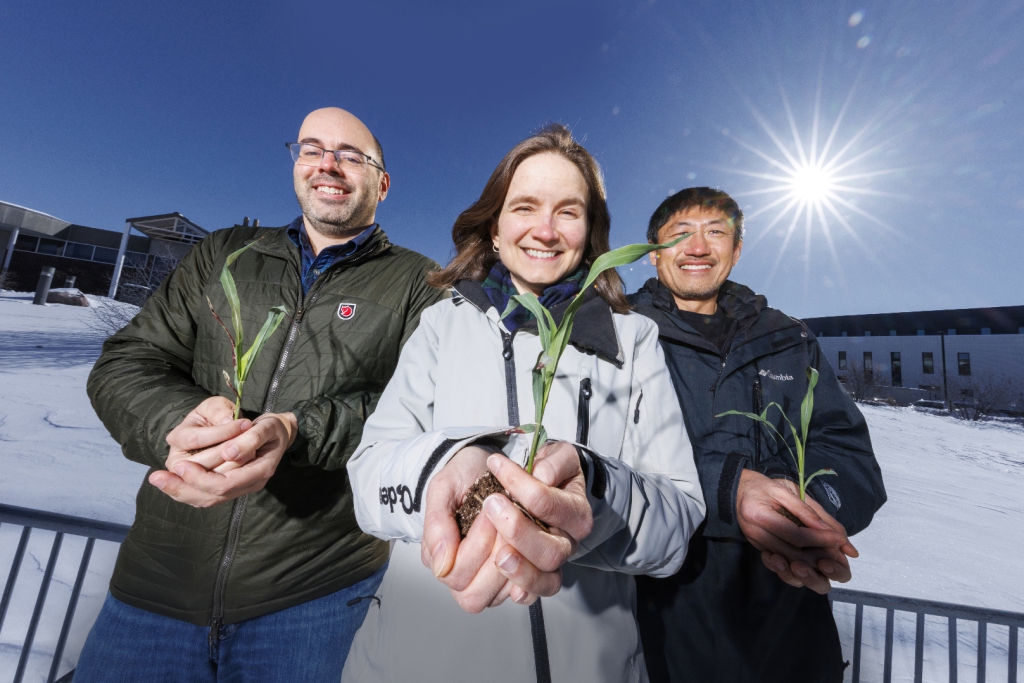
Husker researchers take cues from crop’s circadian rhythms to help sorghum survive cold snaps
Who: Rebecca Roston, Ralph and Alice Raikes Chair of Plant Sciences and associate professor of biochemistry; James Schnable, Nebraska Corn Checkoff Presidential Chair and Professor of Agronomy and Horticulture; Toshihiro Obata, associate professor of biochemistry
What: Roston’s team is using a $1.8 million grant from the National Science Foundation to explore how to harness sorghum’s circadian rhythm to increase its resilience to low temperatures. They are looking at the internal clock of cold-tolerant foxtail millet – which is, like sorghum, a member of the Panicoid grass subfamily – for clues about how to use sorghum’s natural fluctuations in certain fats and chemicals to boost its cold tolerance. The approach could be a game-changer for farmers, paving the way for a future where food security is not threatened by a surprise frost and growth occurs earlier in the year.
“By understanding sorghum’s natural rhythm and comparing it to its more cold-tolerant relative foxtail millet, we can design strategies to enhance sorghum’s cold-fighting machinery at precisely the moment it needs it most,” Roston said.
Writer: Tiffany Lee, Office of Research and Economic Development
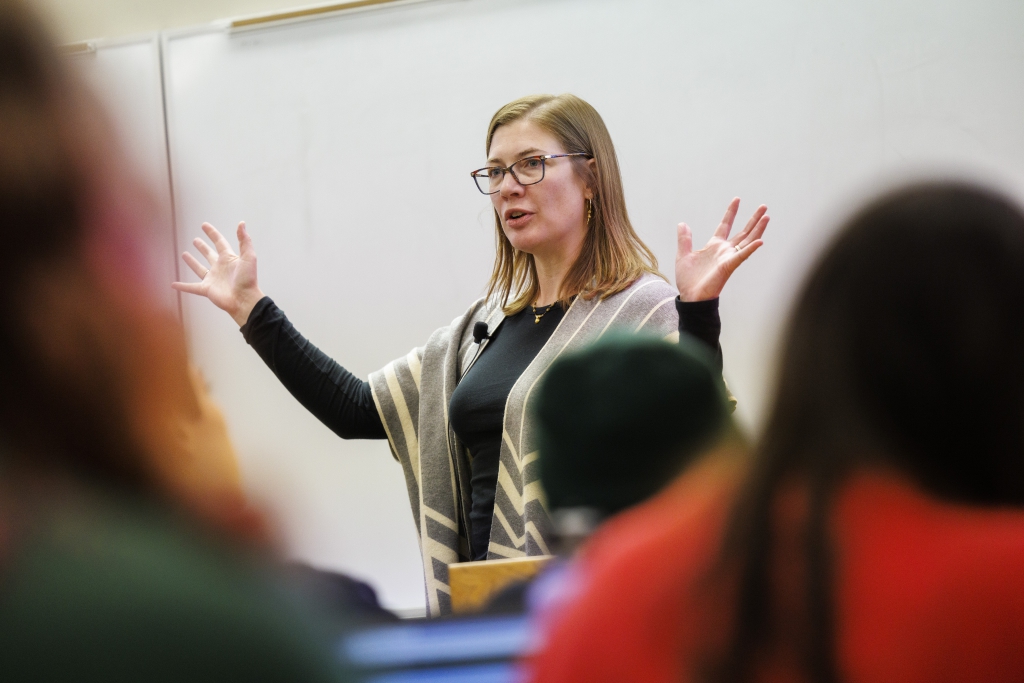
Nebraska program aims to help students make critical ag, natural resources decisions
Who: Jenny Keshwani, associate professor of biological systems engineering and science literacy specialist
What: A Husker research team received nearly $750,000 from the U.S. Department of Agriculture’s National Institute of Food and Agriculture to expand its work to develop interactive games and educational modules for the next generation of decision-makers in the agricultural and natural resources fields. Keshwani’s team launched the project in 2018 with an eye toward using gaming to teach students to use data literacy and systems thinking in scientific decision-making. The new funding will support development of additional games and tools and recruitment of teachers who can use the materials with high school students.
“It’s one of the things we’re seeing with youth … is that they’re really attracted to careers where they can have a positive impact on the world,” Keshwani said. “And so we’re helping them make that connection between the technology and data that’s coming out of agriculture and natural resources and how they can actually do something with that to have an impact.”
Writer: Dan Moser, Office of Research and Economic Development
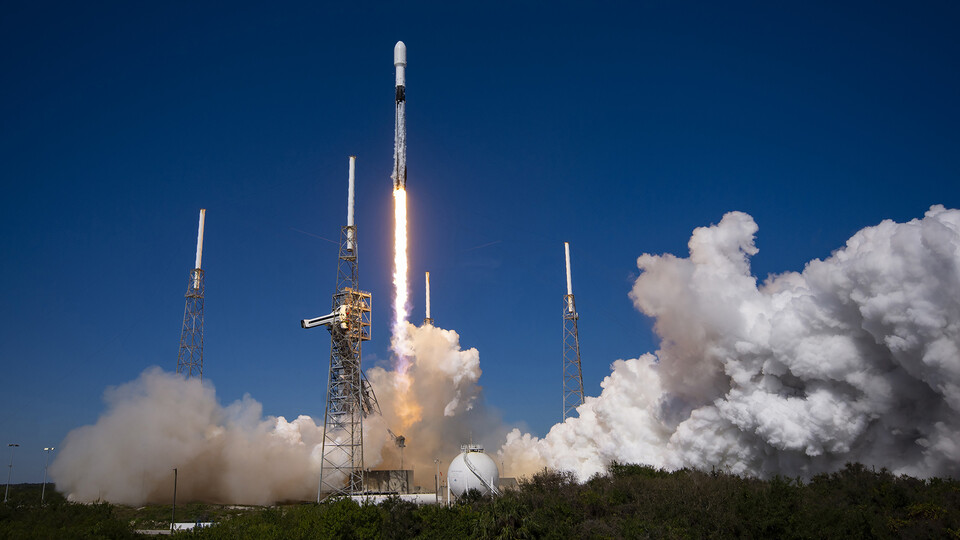
Surgical robot developed at Nebraska launches into space
Who: Shane Farritor, Lederer Professor of Engineering; Virtual Incision
What: A miniaturized surgical robot invented by Farritor and others departed for the International Space Station on Jan. 30, becoming the first surgical robot on the space station. Guided by a Lincoln surgeon, the robot, called spaceMIRA, will simulate a surgery using its “left arm” to grasp and its “right arm” to cut, much like a human surgeon in a hospital operating room. The experiment will mark one of the first times remote surgery tasks have been tested in space. The mission will help identify the next steps for creating surgical technologies suitable for long-distance space travel. It will also enhance health care on Earth by informing development of remote surgery techniques that can help alleviate surgeon shortages, particularly in rural areas.
“Remote surgery has the potential to address these issues so patients can get the health care they need,” Farritor said.
Writer: Leslie Reed, University Communication and Marketing
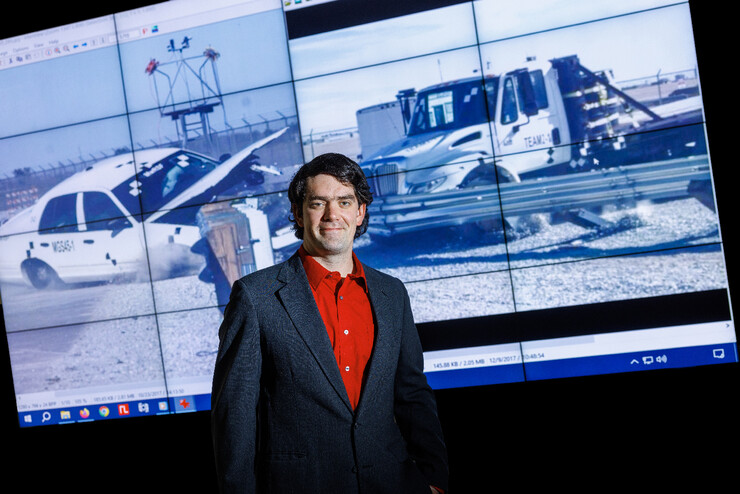
Nebraska experts weigh highway safety and electric vehicles
Who: Cody Stolle, research assistant professor and assistant director of the Midwest Roadside Safety Facility
What: The Midwest Roadside Safety Facility is helping to answer safety and military defense questions raised by the increasing number of electric vehicles on the nation’s roadways. In research sponsored by the U.S. Army Engineer Research and Development Center, the Nebraska facility recently conducted a first-of-its-kind crash test of an EV pickup truck to shed light on whether currently used guardrails and U.S. military protection measures against hostile vehicles are prepared for the growing number of EVs. The crash tests highlighted some of the concerns about EVs, which typically weigh 20% to 50% more than gas-powered vehicles and have lower centers of gravity.
“We need to know as much as we can now because it takes time to design new systems, evaluate them and confirm those results with full-scale crash testing,” Stolle said. “Then, state departments of transportation around the country can begin the process of upgrading roadside barriers to new versions with more robustness.”
Writer: University Communication and Marketing
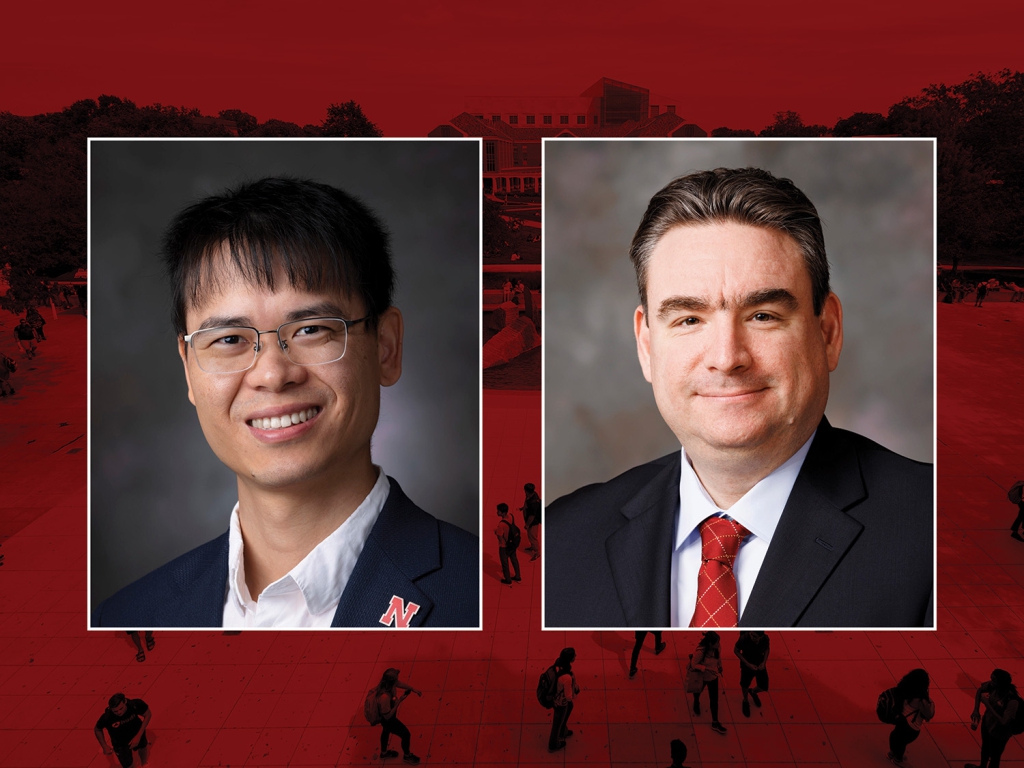
‘Husker-Net’ to provide Nebraska researchers with private 5G connectivity
Who: Qiang Liu, assistant professor of computing; Mehmet Can Vuran, Dale M. Jensen Chair Professor of Computing; Toolika Ghose, director of Research IT Services, University of Nebraska
What: With support from the National Science Foundation, Liu’s team will establish Husker-Net, a 5G network that will enhance the university’s research enterprise, particularly in rural areas where wireless connectivity is often not available, affordable or reliable. It will be the first private 5G network in the state, and one of the only private 5G university research networks in the country. The goal is to fill the gap between what the university’s wireless infrastructure provides and what faculty need for their research. The team plans to launch an end-to-end cellular edge network solution with low operating costs and automated management capabilities.
“We have a big agriculture college, and they have a lot of experiment farms, but they barely have outdoor connectivity,” Liu said. “When we have the tools deployed outside with a real network in a real scenario, it will boost our research and bridge the gap between that research and reality.”
Writer: Victoria Grdina, School of Computing
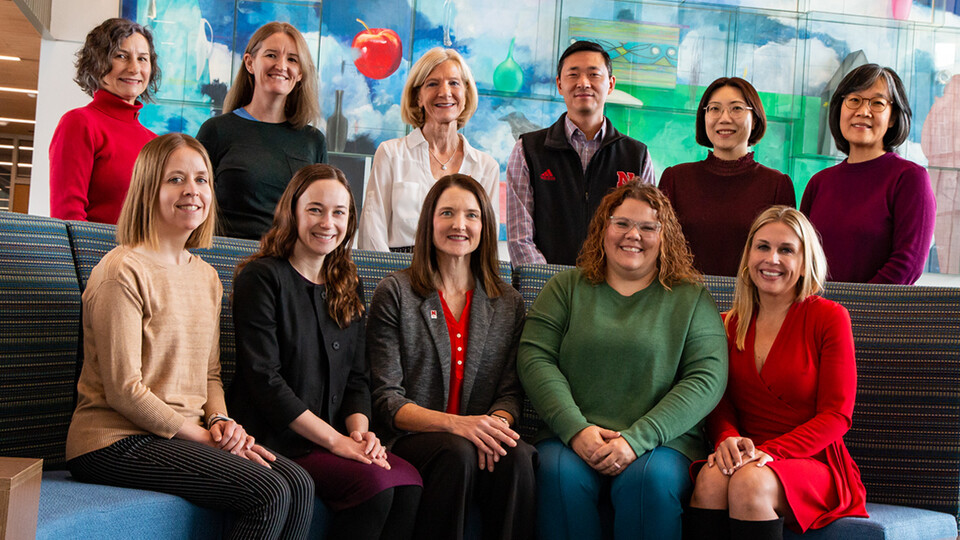
Grand Challenges project aims to strengthen early childhood workforce
Who: Lisa Knoche, research associate professor and co-director of the Nebraska Center for Research on Children, Youth, Families and Schools, along with a team of Husker faculty and university, state and community partners
What: Knoche is leading a five-year, $3.44 million project funded by the university’s Grand Challenges Catalyst Competition program. The team’s goal is to promote children’s social-emotional development by enhancing early childhood workforce development and retention. The researchers will accomplish this by deepening partnerships among researchers, educators, parents and community partners, and integrating approaches from some of Nebraska’s most successful evidence-based interventions. This will lead to individualized, inclusive professional development opportunities for members of the early childhood workforce. One example is Connections for Kids, which the team is developing to measure and boost children’s social and emotional skills.
“Our work will help ensure that all children, despite early life adversities, are positioned for lifelong health and social-emotional well-being, which enables them to develop into capable and productive citizens who contribute to Nebraska’s vitality and social good,” Knoche said.
Writer: Chuck Green, Nebraska Center for Research on Children, Youth, Families and Schools
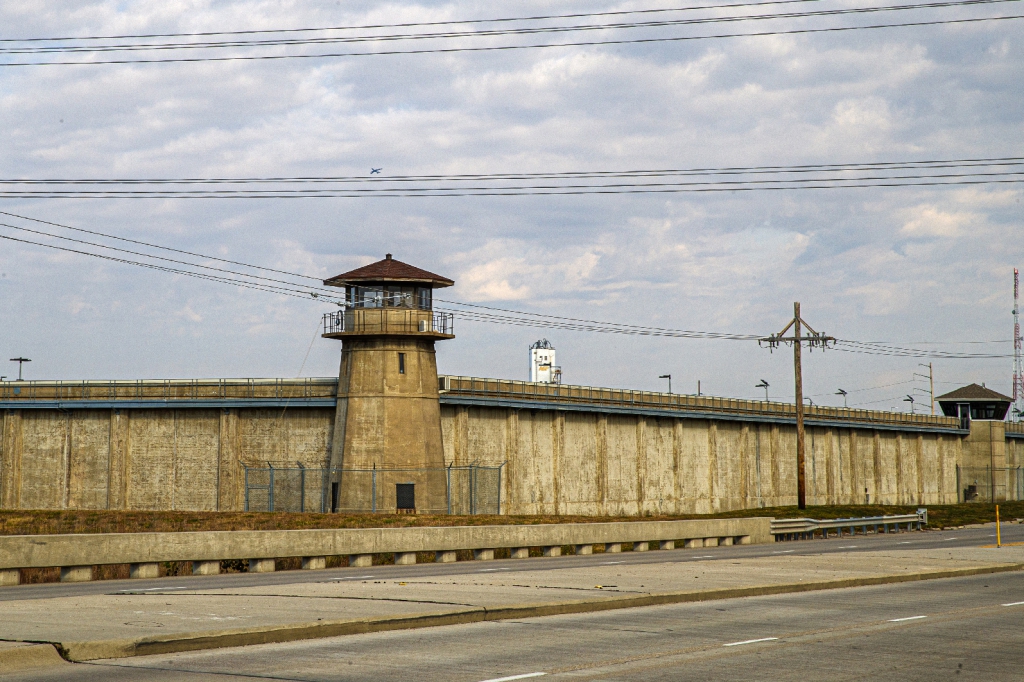
Department of Justice grant will support new Innocence Clinic
Who: University of Nebraska College of Law
What: The College of Law will open an Innocence Clinic, its 10th clinical program, this fall. With the help of a $600,000 grant from the U.S. Department of Justice, third-year law students will raise awareness of wrongful convictions in Nebraska and work to exonerate people who have been wrongfully convicted. Nebraska’s incarceration rate is among the highest in the nation, and recent studies estimate that 4% to 6% of people incarcerated in U.S. prisons are innocent. This would translate to as many as 300 wrongfully convicted individuals in Nebraska. The clinic will partner with the Midwest Innocence Project to identify potential cases.
“Our clinical programs help students develop skills that they will rely on in practice,” said Richard Moberly, dean of the College of Law. “The Innocence Clinic will contribute to training the next generation of Nebraska lawyers as they learn about the causes of wrongful conviction and experience case identification and litigation of actual innocence claims.”
Writer: College of Law





